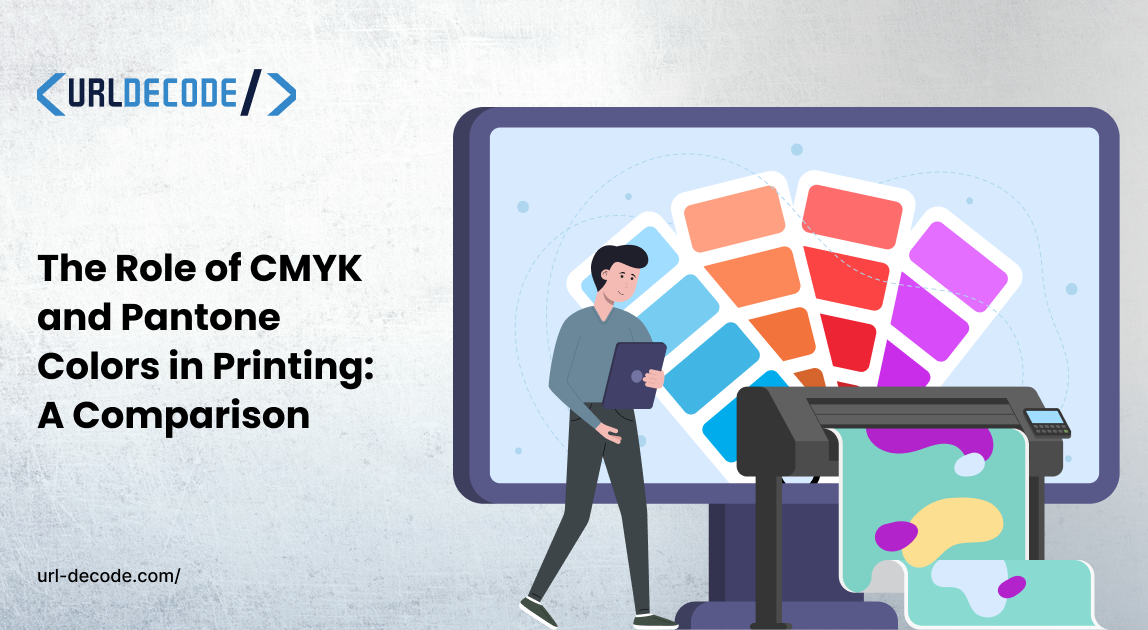The Role of CMYK and Pantone Colors in Printing: A Comparison

Colors are intricately connected to images and emotions. Dark shades can evoke feelings of dread, sadness, or melancholy, while bright colors have more positive connotations. This is why marketers and designers learn color psychology. Having this knowledge enables them to create advertisements and products that evoke certain emotions in their audience.
This brings us to color formats. Colors across print and digital media can vary quite a lot. Something that looks great on a screen might not look that good on paper, and vice versa. This is why it is important to know the right color formats for each medium.
Today, our focus is on CMYK and Pantone formats in printing. Let’s see what they are, their unique benefits, and situations where one is preferred over the other.
CMYK
Let’s start with CMYK. CMYK stands for Cyan, Magenta, Yellow, and Key (black). CMYK is a color format used in physical prints. The four colors that make up its name are used to recreate all other colors via blending.
When printing using CMYK color format, colors are blended together by combining four layers. Each layer has some dots on it, much like pixels on a screen. Individually, each color layer will appear to be random blotches or overblow images. However, they will form the image with the correct colors when brought together.
This is how CMYK colors are reproduced in print. The idea is that any color can be reproduced by overlaying layers of cyan, magenta, yellow, and black in the correct ratio. Since the process is somewhat analog, it is impossible to get the same color every time. Even if you print the same image twice, there will be slight differences in the colors.
Another issue is that blending layers together is not a great method to recreate specific shades of vibrant colors. So CMYK printing is simply unable to print out some shades.
CMYK also has issues where the colors will differ due to:
- Ink quality
- Paper type
- And printer or software calibration
So, that’s what you need to know about CMYK.
Pantone
Pantone is another color system used in print. Its defining feature is that it has a lot of color accuracy. Unlike CMYK, which uses only four colors to recreate other shades, Pantone has specific color codes for every shade. For context, CMYK can only recreate 55% of the shades from the Pantone color palette, which has approximately 1,000 shades.
In the Pantone color system, the colors are mixed and created before printing them out. Each shade has a very specific formula, which even accounts for print material. For example, one particular shade of green has the code 7738 C. Anybody who uses the Pantone system for printing can use this code to recreate the exact shade over and over again.
The C suffix means the shade is for coated paper. Coated paper has a glossy finish. The other suffix is U or uncoated. Uncoated paper has a matte finish. The same color on coated and uncoated paper will have a different shade. That’s why the Pantone system specifies the paper type.
Which Is Better For Printing
Now, the big question is which color system is better for printing. The answer depends on your priorities. Do you want accuracy or cheap printing?
You see, while Pantone colors are extremely accurate, that very same accuracy also makes them quite expensive. This means exclusively printing using Pantone is just not viable.
CMYK, on the other hand, is quite cheap and has great color reproduction. It may not match up to Pantone, but it is more than good enough. Therefore, CMYK is better for printing from a cost point of view. If color accuracy is important to you, then Pantone is the obvious choice.
Conclusion
So, we learned about the CMYK and Pantone color systems used in printing. We learned how each work and their respective strengths and weaknesses. In the end, we learned that which system you use depends on you. Ultimately, CMYK is the more cost-effective choice but has lower color accuracy, while Pantone is the highly accurate but pricey option. Our advice would be to use a little bit of Pantone for the most color-critical prints and CMYK for the rest.



